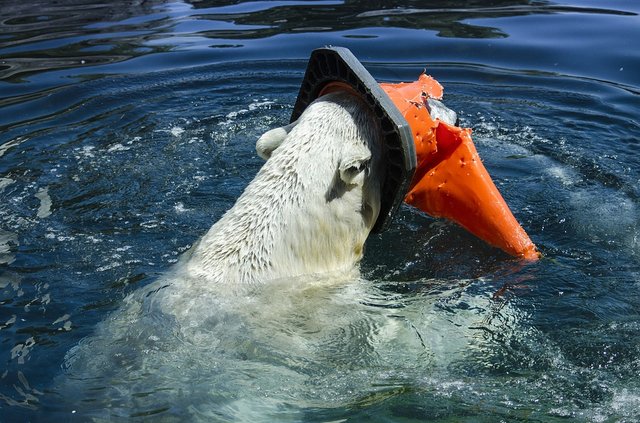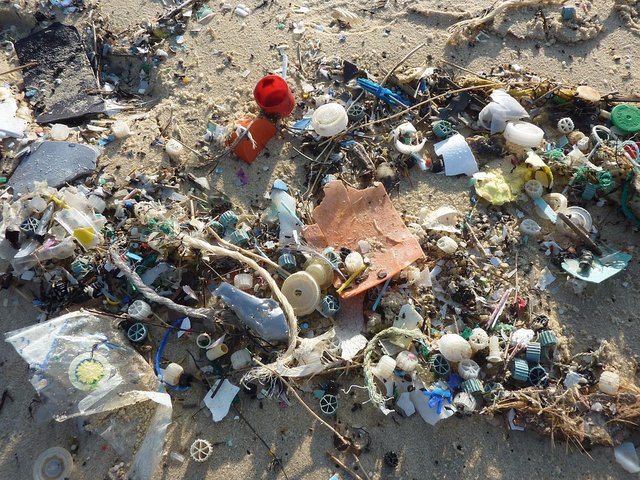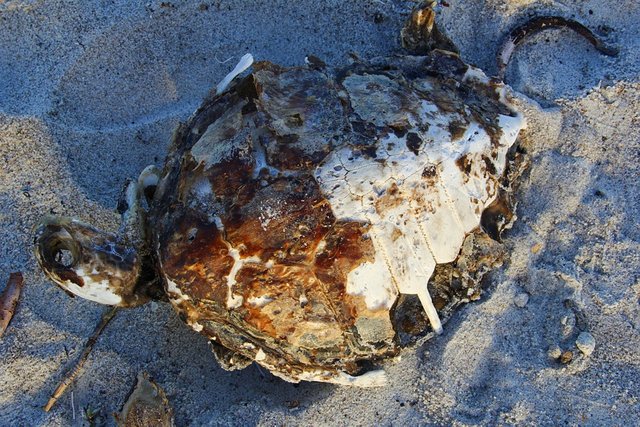Plastic in the Ocean and the Effects of Plastics on the Ocean, How Does it Effect Us?
The plastic objects that we get rid of, such as plates, glasses, bottles or bags, can end up in a landfill, be incinerated or recycled. However, due to the action of wind and rain, this waste can also reach the sea even when we throw it away.
They may end up abandoned due to the action of storms, wind or rain, or simply because they have not been disposed of properly. This way they can reach rivers or other waterways and even in the sewer system of urban areas. Once there, unless they are removed beforehand, their final destination will be the sea no matter how far we are from the coast.

Image source https://pixabay.com Credit: Wildfaces
Nowadays only 9% of all the plastic that we have produced and consumed until the present time worldwide has been recycled, 12% has been incinerated, and the vast majority, 79%, has ended up in landfills or in the middle ambient.
Plastic objects can also reach the sea from landfills, by the water that flows through them. In addition, we also find plastics in the sea that come from deliberate garbage discharges, from accidental discharges from ships, or from effluents from sewage treatment plants and wastewater treatment plants. 80% of the waste that we find in the sea comes from land, while the remaining 20% from the maritime activity.
Because the plastic is very persistent and disperses easily, we can find plastics in all corners of the planet, from the Arctic to the Antarctic. Once the plastic objects reach the sea they can be ingested by the marine fauna and accumulate inside, they can stay in suspension or floating on the surface, they can finally sink and remain on the seabed, or they can even be trapped in the ice of the Arctic. Plastics have been found even in the deepest areas, more than 10,000 meters deep.
The plastics that we find on the surface are only the tip of the iceberg, since they represent less than 15% of all plastics in the sea. Currently, five concentration zones known as plastic "soups" have been identified: one in the Indian Ocean, two in the Atlantic (North and South) and two in the Pacific (North and South).
These surface areas have a high concentration of microplastics. On the coasts and the coast, you can also find high concentrations of plastics, especially in regions with high coastal populations, with inadequate waste management systems, intensive fisheries, or high tourism.
In the Mediterranean we also find a large amount of microplastics, similar to those of the "soups" of plastics. In fact, between 21% and 54% of all the microplastic particles in the world are found in the Mediterranean basin.
During the investigations carried out by Greenpeace in 2015, an average of 320 garbage objects were collected per 100 meters of beach sampled in Spain, with 75% of these waste being plastic objects. Every day 30 million cans and plastic bottles are still being abandoned in Spain, which pollute our terrestrial, coastal and marine environment.

Image source https://pixabay.com Credit: bilyjan
Effects of plastics on the ocean
The ocean provides us with food, employment, unimaginable tourist destinations and, in addition, it is the habitat of essential species. However, for decades it has received millions of tons of plastic waste that today represent one of the most serious environmental problems on the planet.
There is no doubt that the ocean sustains life on earth. If you think about holidays, you have to keep a fact in mind: 80% of tourism in the world is done near the sea. So, why are we filling it with plastic?
The containers and products made of this material that today are in the seas can surround the Earth four times in a single year. Figures like this should be enough to alert us and produce changes. And it is that 80% of the pollution in this ecosystem is caused by the human being that, among other things, consumes plastic for decades without any concern for waste, the place where they end up and the effects they cause.
Absorption of pollutants
In addition to the toxicity of plastic, plastic particles in the sea have the chemical property of attracting and accumulating hydrophobic (oily) contaminants in seawater, such as DDT and PCBs. That is to say, plastics are chemical "sponges" for dangerous pollutants that reach the sea from agriculture and industry and open the door for them to enter the food chain.
Secretion of endocrine disruptors
While plastic attracts and accumulates certain toxins, it also secretes others that contaminate seawater. 100% of the collected seawater samples contain bisphenol A, a potent endocrine carcinogen disruptor used in the manufacture of polycarbonate and other plastics.
Once plastic objects reach the marine environment, they take between decades and hundreds of years to decade. Degradation time depends on the type of plastic and the environmental conditions to which it is exposed (sunlight, oxygen, mechanical agents). In the case of the oceans, UV radiation from sunlight is the main agent that degrades plastic.
The action of the waves accelerates this process and as a result the larger fragments are broken into smaller pieces, generating microplastics. During all this time until they degrade, all plastic objects that reach the sea can cause serious damage to the marine fauna.

Image source https://pixabay.com Credit: DVOC
Currently, some 700 species of marine organisms are affected by this type of pollution. Each year, more than one million birds and more than 100,000 marine mammals die as a result of all the plastics that reach the sea.
Isn't it about time we changed our habits ? What are your thoughts?
Limited Promotion! Use both @t50 and @hybridbot for a chance of receiving extra upvotes!
You got a 3.75% upvote from @t50 courtesy of @waynefoster!
Anyone can use this service by sending a minimum of 0.010 SBD or STEEM to @t50 with the post you want upvoted as the memo.
Consider investing Steem Power to receive daily payouts from bot income.
10 SP, 25 SP, 50 SP, 75 SP, 100 SP, 125 SP, 150 SP, 200 SP, 250 SP, 300 SP, 350 SP, 400 SP, 450 SP, 500 SP, 600 SP, 700 SP, 800 SP, 900 SP, 1000 SP or use the delegation manager. At any time you can get your investment back by undelegating.
Partners
@upfundme and #upfundme
TASKMANAGER bitshares token
@hybridbot - bid/membership hybrid bot (0.010 SBD minimum)
@memearmy meme support community bot
Congratulations! This post has been upvoted from the communal account, @minnowsupport, by waynefoster from the Minnow Support Project. It's a witness project run by aggroed, ausbitbank, teamsteem, someguy123, neoxian, followbtcnews, and netuoso. The goal is to help Steemit grow by supporting Minnows. Please find us at the Peace, Abundance, and Liberty Network (PALnet) Discord Channel. It's a completely public and open space to all members of the Steemit community who voluntarily choose to be there.
If you would like to delegate to the Minnow Support Project you can do so by clicking on the following links: 50SP, 100SP, 250SP, 500SP, 1000SP, 5000SP.
Be sure to leave at least 50SP undelegated on your account.